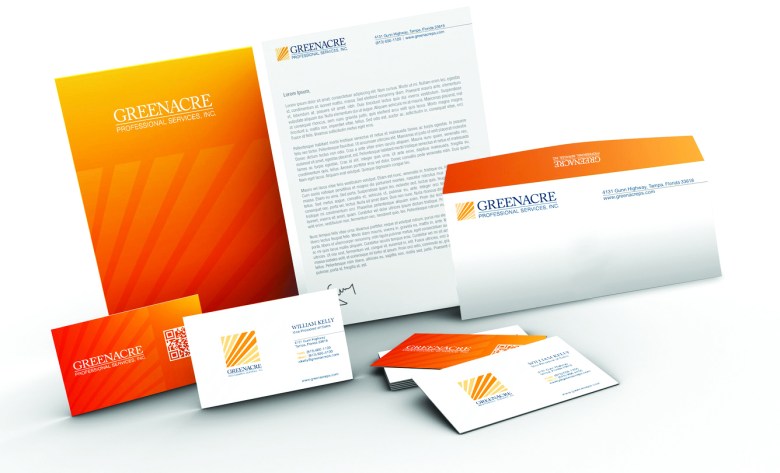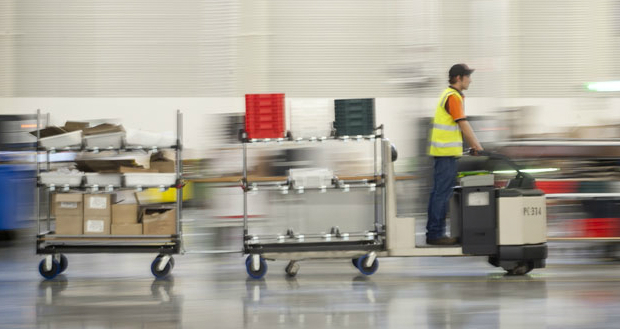
Living in a world where every print shop could afford to purchase the latest equipment whenever their managers attended a trade show, you would not need the services of a trade printer.
Such a world exists only in the dreams of people who own shares on the world’s most expensive press manufacturing companies. And if such a world did exist, its print industry would soon collapse from the sheer weight of unsustainability that kind of press and print machine ownership would create.
In our real world, most small print companies need to take extreme care when making expensive capital expenditure purchases and, even when they do, those purchases can come back to bite them if print orders become thin.
Also in our real world, we have print companies who have bought the latest equipment and who want to print for other companies: trade printers.
While the concept of trade printing might seem to go against the Australian notion of, “It’s okay mate, I’ll find a way to do it myself,” the actual practice of trade printing works marvellously well.
The benefits to clients of trade printers include no capital expenditure; access to the latest generation of whatever technology they need; technical knowledge and expertise in the use of that technology; access to end-to-end solutions; and ultimately, more cash left in their accounts at the end of the week.
In this, our trade printing buyer's guide, we invite you to read about the country's top trade print companies and what they can offer. You will meet a group of printers every bit as passionate about printing as you.
Change, although unavoidable, makes a crucial ally to trade printers because it allows them to adapt to what customers need and enables trade printers to stay on top of their game, according to Whirlwind Print chief executive, Andrew Cester.
He says if a trade printing business is to be successful in today’s challenging, fast evolving environment, it must always look ahead and push boundaries.
Whirlwind, a Melbourne-based family business, started in 1996 as a graphic design company. These days it offers end-to-end solutions from trade printing, to account, brand and colour management, as well as online printing, and online graphic design.
Speaking with Australian Printer, Cester says the trade print industry has seen a huge change in the last decade.
He says, “There were only a handful of trade printers who provided some products, but that no longer reflects the current trends.
“The change that we see in trade printers now is that they provide end-to-end solutions from offset, digital and design right through to logistics.
“Trade printing is huge. It has become incredibly competitive compared to the previous years.”
To stay on top though, Cester says, his company must constantly push the boundaries through innovation.
One of the company’s innovative ideas is its successful W3P, a client web portal that makes it easier for printers and designers to service their customers online.
Cester says, “Our vision has always been to make ordering easy. And that vision was recognised by the gap in the market. And since we knew how challenging it can be to order online, we developed the W3P.”
He says that in a more general sense, the role of trade printers has evolved from a niche industry to a competitive market that has seen many small printers enjoy saving on overheads and reduced capital investment.
Some 18-months ago, the company began offering its clients digital services, which Cester says is experiencing a boom.
The company is taking advantage of the growth with Cester saying he expects it to grow by another 20 per cent in the next 12 months which will see the company further expand its digital capacity.
He adds, “We provide a wide range of reliable services and for any printer to do what we are doing they would have to invest millions of dollars in equipment, overheads, floor space and logistics. Fast turnaround
CMYKhub, a trade printer with hubs in Sydney, Brisbane, Perth and Melbourne has also seen the industry change dramatically, witnessing a scenario where prices don't reflect the fast turnarounds customers now demand.
Trent Nankervis, managing director of CMYKhub, told Australian Printer that the trend his company now sees across Australia involves printers wanting their printing produced quickly and, because of digital, which he says reduces the margin of error, they only order in small quantities.
So, to supplement the clients’ hunger for fast turnarounds, he recently upgraded to a new Scodix Ultra digital embellishing solution from the Currie Group. The company has also installed an HP Indigo 10000 B2 sheetfed digital press, also supplied by Currie Group.
While demand for high speed turnaround is the norm, Nankervis says, it does not mean higher revenue for the business as people have a reluctance to pay more.
He says, “The jobs also come in at once and so one day we have lots of work and the next day it will be quiet again.
“What is happening is that the job value is decreasing, so people want their work done and fast but don’t want to pay more – that is definitely a trend we are seeing.
“We are doing more work but not making as much as we would if it was a few years ago when the value of the jobs was more and people ordered more bulk, but I think many printers are in the same boat.”
Add value to print
Fast turnaround isn’t just the province of digital though.
LEP Colour Printers promises 24 hour delivery after receiving an online order. It achieves this partly through opening a brand new duplicate factory in Victoria, based on its Queensland factory. The company operates both plants on Lean manufacturing principles.
Rob Walters, general manager at LEP Colour Printers, conducted an efficiency review of the company’s operations in Brisbane and Victoria, which he says led to much faster turnarounds for offset print.
While he will not reveal how it achieves the faster service option as it "will give the competition an advantage," he says the quick turnaround will also help the bottom line.
However, he says LEP does more than deliver items fast, it provides clients with strategic business advantage, by offering his customers the leverage of its market solutions and capabilities.
He says, “This allows our them to build and diversify their own business and offer their clients much more than they normally would."
LEP, like most trade printers today, also provides an online ordering portal, called LEP Online, which is available 24/7.
He says, “It is our shopfront and is a fully integrated web-to-print system, from customer order to manufacturing interface, in one continuous system. When a client places an order it goes directly into pre-flighting, production and delivery without any human intervention.
“It is a totally paperless system so clients can view the status of their order at any stage in real time.”
While the business is entrenched in digital technology, Walters says the fundamental concept of trade printing hasn’t changed much in the last 10 years.
“Printers are still looking for ways to cost effectively extend their product range and value add for their customers,” he says.
“There has been some shift in products, customer expectations, markets and competitors, which is continuous and to be expected.
“The biggest change has been the market embracing online ordering, which has been instrumental in reshaping the industry and the trade printer’s role.”
He says the HP Indigo 5500, it installed last year, has opened a host of new products to LEP’s portfolio of business cards, flyers and magazines in gloss, matt, plastic, loyalty cards and recycled stocks, which are all available in quantities as small as 50.
Offset gives quality
While digital seems to be a big part of a major trade printer, Tim Lu, managing director of CTI Colour Printer is boasting the quality of offset printing, and providing an ‘alternative to its customers’.
He says while technology might be the catalyst for the rapid growth of digital there is still room for offset printing.
Lu says, “Digital copy machines have been boasted in the market for print shops and service providers, but digital presses cannot produce magazines and promotional material, and printers still need traditional offset machines to produce a lot of their work.
“However, many printers cannot afford to get this sort of machine to manufacture products themselves. So we provide our long standing customers and new clients the opportunity to satisfy their clients’ needs and provide this sort of services.
“And we want to show that we provide a wide range of printing services. For example, traditionally we did magazines and stationary, but now our services also include point-of-sale, packaging and cartons but in small quantities.”
Lu says the company, based in Fairfield, NSW, has been growing steadily since its humble beginnings 11-years ago.
He says the growth is because the company provides an alternative for its customers, who want to outsource work, insisting that a major point of difference with CTI is that it does not outsource its work to overseas companies.
“We print all the jobs in Australia. That is something that we want our clients to know. Some say they produce the work here but that may not be true,” he says.
“Keeping work in-house is important because it ensures the quality of work is high which keeps our customers happy and loyal to us.
“The only thing that I want to address is our online system. We need to improve our online services so that we can provide our customers with easy access to our products.”
Trade printers are making great strides to help printers meet the demands of the market, and for some printers this means ditching their manufacturing equipment completely.
Customised solutions
At Rooster IMC, printers can form a partnership so they can have their own dedicated account manager. They can also negotiate fully customised, collaborative solutions to suit their business.
Naresh Gulati, who started the company, wants printers to have the chance to use all or part of the services that Rooster IMC offers. He says, “Printers need supplier partners who are an extension of their own business, and we can be that."
Typically, the printers who can take advantage of Rooster IMC's services number among those with older equipment, which may require an upgrade so they make use of the Rooster IMC plant. Many smaller printers simply can't commit to investing in expensive machinery.
While print managers and print shop owners will always face risks in this industry, Gulati believes that they can mitigate their risks by using the services of a trade printer like Rooster IMC.
He says, "You can take the risk out of your production. There are no debts hanging over your head you cannot pay if business does not meet expectations. You have the ability to ramp up your business gradually with no need for costly investments until you can afford to bring it in-house."
Rooster IMC also offers a team of highly trained specialists who can offer expert advice on how to get the most out of its equipment and services and obviously, it is an advantage to have a partner, who has a vested interest in your success.
Comment below to have your say on this story.
If you have a news story or tip-off, get in touch at editorial@sprinter.com.au.
Sign up to the Sprinter newsletter



